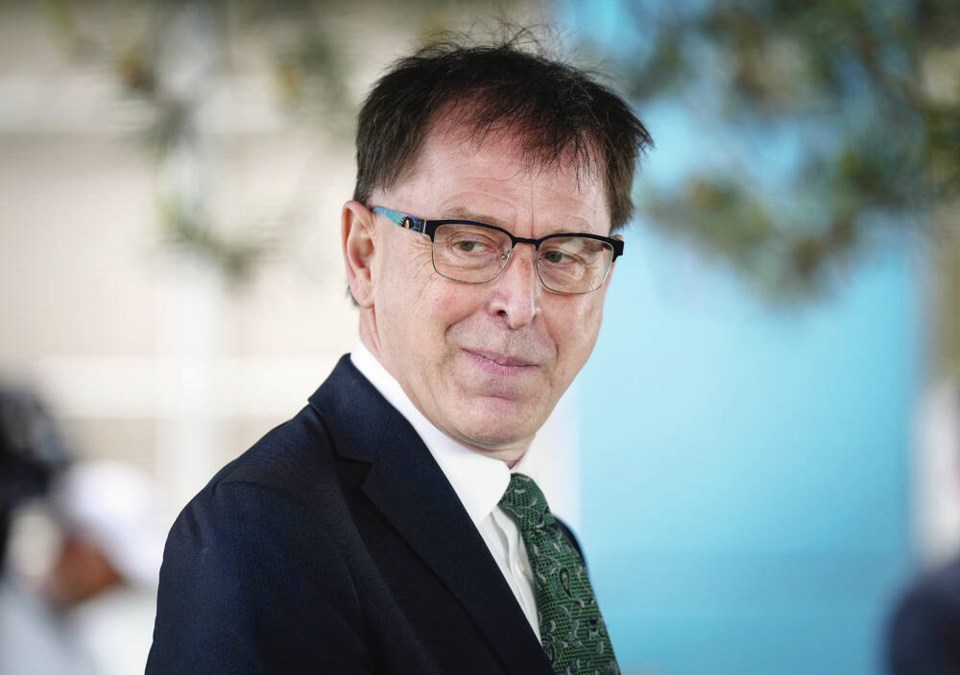If issuing news releases could fix the shortage of family doctors in B.C., the crisis would be a distant memory by now.
There have been hundreds of government announcements in recent years about different measures to address the increasing desperation taxpayers feel when trying to find a doctor.
There have been stopgap moves here and there, and localized solutions that helped out. Some of them were absurdly small-scale (“B.C. Welcomes Five New Doctors to Island”).
There’s also been a long list of high-concept announcements about “transforming primary care.” But many of the announcements just stopped problems in specific communities from getting worse, which isn’t the same as making the overall situation better.
So the announcement on Monday about the latest attack on the crisis is a tribute to government’s persistence, more than a guarantee that it’s going to make a difference this time.
At the risk of being delusionally optimistic, though, this one might make more sustained progress than previous efforts. The phrase “fundamental change” came up, and it bears out in some of the details.
Up until three years ago, the multibillion-dollar master agreement that sets the terms for doctors’ employment was by and large renewed every few years according to a fee-for-service template.
When Health Minister Adrian Dix announced the last one, in 2019, there was more emphasis on team-based care and transitioning away from the fee-for-service model.
It “charts a new way forward,” he said at the time, with another $330 million thrown into the compensation pot. The new way forward crashed into the declining number of family doctors and the impact of the pandemic and didn’t come close to making the difference that was needed.
This time around, the new physicians’ master agreement, which puts an additional $708 million into the already-sizeable compensation pot, takes second billing to a complete revamp of the payment mechanisms.
The big change is that doctors next year could be paid for their time, not just for the number of patients that shuttle through the office.
The flat rate for seeing a patient will be optionally replaced with a system that includes the time per visit, the number of daily patients seen and supported, case complexity and office overhead costs.
Officials said a full-time family doctor collected about $250,000 last year just in fee-for-service payments. While a direct comparison isn’t available, the new model would see a typical GP gross almost $400,000 a year. There were the usual assurances that it will attract new family doctors and ease the attrition rate of existing ones.
The master agreement also has a major addition — a roster system next year in which family doctors will maintain and report on who they are caring for, as part of a process to track individuals’ attachment to doctors and maintain continuity.
Dix promised a system in the next six months “that allows people who want a family doctor to have a place they can connect and get access to one…
“You don’t have to search around; you don’t have to phone doctor by doctor…”
While the patient roster is on the near horizon, the day when the word “crisis” can be detached from the family doctor issue is vague, and further out.
The new agreement runs three years and officials suggested it could take that long for the full intended effects to arrive. Small community emergency rooms are routinely closed now, and clinic time slots fill up in minutes.
Officials at a briefing were naturally shy about stating when those problems will become a thing of the past. Monday’s moves were portrayed as a way to solidify the system while an assortment of other measures takes effect. Bigger medical schools, more team-based care, streamlining foreign-doctor accreditation and an elaborate new human-resources system have to kick into gear as well.
The to-do list runs to 70 items, and each one has to be built out over time.
Doctors of B.C. president Dr. Ramneek Dosanjh said the new master agreement is the best in Canada and one of the best ever signed in B.C. She called it a milestone announcement but added the benefits won’t happen overnight.



